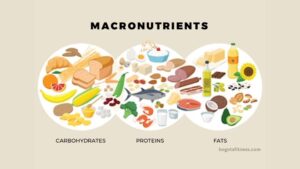Dining out has been a tradition since the dawn of mankind. For example, inns and taverns were frequented by people in ancient Rome for food and drink. Tea houses were common venues for people to congregate, mingle, and enjoy tea and snacks in China and India.
But the 19th and 20th centuries saw the rise of the contemporary idea of eating out often, especially in cities where people had less time and room for cooking and hosting guests at home. In order to serve a growing population, restaurants have had to adapt to the rise of industrialization, transportation, and urbanization.
The earliest restaurants opened in the United States in the late eighteenth century. The mid-20th century saw a rise in the popularity of eating out. This was partly brought about by the growth of the fast-food business, which allowed people to eat out more frequently and at lower costs.
With so many options to fit a range of tastes and budgets, eating out has become a commonplace part of modern life. Restaurants have changed over time to accommodate shifting client choices and lifestyles, from fine dining to fast food.
Eating out has become a common practice, whether it’s for business, social gatherings, or just a passion for exploring different eateries and culinary styles. It might be difficult to keep a healthy diet when dining out, though.
It is simple to develop bad eating habits when eating at restaurants because the food is frequently heavy in fat, calories, and sodium.
Importance of Maintaining a Healthy Diet Even When Eating Out
Even while dining out, adopting a nutritious diet is necessary for general health and wellbeing. Here are a few explanations for this:
- Nutrient intake: Eating out frequently results in higher calorie, salt, and harmful fat intake than cooking your own food at home. Nutrients include vitamins, minerals, fiber, and protein—found in foods like whole grains, fruits, vegetables, and lean protein sources—should be a part of a balanced diet. By selecting nutritious selections from the menu and avoiding bad fats and excess calories, one can still obtain the necessary nutrients.
- Chronic disease prevention: A reduced risk of chronic illnesses like cancer, diabetes, and heart disease has been associated with a good diet. Regular dining out raises your chance of contracting these illnesses, particularly if you select high-fat, high-calorie, and high-sodium foods.
- Weight management: If you’re not careful, eating out might contribute to weight gain. Making smart food choices and limiting portion sizes will help you keep a healthy weight and manage your calorie consumption.
- Overall well-being: Your mood, energy level, and cognitive performance can all be enhanced by eating a nutritious diet. When you eat out, you can feel better both physically and mentally by making healthy food choices.
Even while dining out, it’s critical to keep a nutritious diet in order to manage your weight, avoid chronic illnesses, acquire the nutrients you need, and enhance your general health.
The Challenges of Eating Healthy When Eating Out
It might be difficult to eat healthily outside for a variety of reasons.
- Limited options: Making healthy decisions is challenging because there are often few healthy options available in restaurants and fast-food establishments. High-fat, high-calorie, and high-sugar items that are bad for our health tend to dominate many menus.
- Portion sizes: In many restaurants and fast-food establishments, portions are frequently substantially larger than what we would consume at home. Overindulging and ingesting too much fat, sodium, and calories might result from this.
- Lack of control over ingredients: We can’t always control what goes into our meals when we’re dining out, so it can be challenging to stay away from harmful additives like artificial flavors, preservatives, and excessive sodium.
- Social pressure: Since dining out is frequently a social activity, we could feel under pressure to order unhealthy food in order to fit in with the group. It is challenging to maintain our healthy eating objectives as a result.
- Cost: Eating healthily outside can be more expensive than eating unhealthy food, particularly in convenience stores and fast-food restaurants. People with a limited budget may find it difficult to make good decisions as a result.
- Time constraints: It might be hard to discover healthy solutions when we are pressed for time or are on the run. Numerous fast-food restaurants and convenience stores provide quick, harmful, and handy options that may not be optimal for our overall health.
Also Read: CONTROL SUGAR CRAVINGS: EASY HACKS
Due to a lack of options, huge portion sizes, inability to regulate ingredients, social pressure, expense, and time constraints, eating healthily when dining out can be difficult. However, we may overcome these obstacles and continue eating a nutritious diet even while we are dining out by organizing, investigating healthful options, and making thoughtful decisions.
How to Eat Healthy When Eating Out
Making informed decisions when dining out can be aided by preparation, mindful eating, portion management, awareness of hidden carbohydrates, and avoiding excessive sodium.
Plan Ahead
Making a plan is a useful strategy to guarantee a nutritious meal when dining out. Look at the internet menu before you go to the restaurant and make healthier selections. This will guarantee that you make healthy decisions and help you stay away from rash decisions. You won’t be as tempted to make bad decisions when you enter the restaurant because you will already know what to order.
Mindful Eating
Eating mindfully when dining out can lead to healthy eating habits. Being mindful during eating involves observing your surroundings, your food, and your body’s cues. When eating, take your time, give the meal a good chewing, and enjoy the flavors. Making better choices and avoiding overeating will be aided by this. Being aware of what you’re eating will probably make you enjoy and feel full after eating less.
Choose Wisely
Select healthier menu items including salads, grilled fish, poultry, and steamed veggies while dining out. Choose foods that are low in sodium, fat, and calories. Steer clear of creamy sauces, fried foods, and sugar-rich meals. Do not be afraid to ask the server for more information if you have any questions regarding the nutritional content of a dish.
Understanding the menu descriptions is crucial. Phrases like “crispy,” “deep-fried,” “loaded,” and “smothered” frequently denote a high calorie, fat, and sodium content in a dish. Alternatively, search for dishes on the menu that are roasted, baked, steamed, or grilled. You may cut back on calories and fat by using these healthier cooking techniques.
Portion Control
Portion control is another essential component of eating healthily when dining out. Large quantities are frequently served at restaurants, which can cause overindulgence. Ask for a lower portion size, split the meal with a friend or family member, or get a to-go box so you may preserve half of your meal for later to help you regulate your portion sizes. By having another meal the next day, this will not only help you keep your quantities under control but also save money.
Careful with Hidden Carbs
Although they are necessary, hidden carbohydrates can be included in some restaurant meals. When eating out, you must exercise caution when consuming foods high in carbohydrates, such as bread, pasta, rice, and potatoes. Pick an appetizer that is vegetable- or carb-based, such as a salad, rather than something heavy like bread or chips and salsa. When ordering an entree, think about switching out the starchy sides like rice or potatoes for a side salad or some steamed veggies for a healthier option.
Avoid Excess Sodium
Although our bodies require sodium in tiny levels, an excessive amount of the mineral can cause high blood pressure and other health issues. It’s important to watch how much salt you eat when dining out because restaurant meals are frequently heavy in sodium. Refrain from adding salt to your diet and request that foods be served without salt. Menu items labeled as “spicy” or “salty” should be avoided since they frequently contain excessive amounts of sodium. Select meals low in salt, including chicken or fish that is grilled and served with steamed veggies on the side.




